Education
The ruins of Nigeria’s Ivory Towers
Published
9 years agoon
By
Olu Emmanuel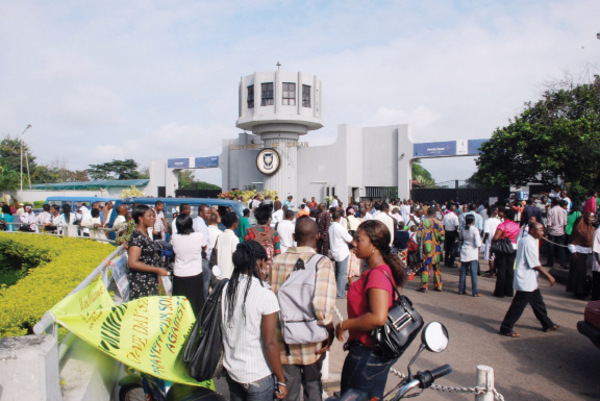
Spare 4ICU a sigh for chucking those preppies at the UI behind their colourless counterparts at the University of Zimbabwe last year. But don’t wink at the rubble of Nigeria’s citadels of learning either
By Segun Elijah
As you hit the sidewalk that leads you on to the heart of the Lagos State University, Ojo, two things jump at you: one, the miracle of learning amidst the frenzy of buying and selling that goes on around the perimeter of this school; then, the wonder of a couple-of-miles-wide institution carrying no fewer than 90,000 students served by 795 lecturers on that campus and its three satellites. Legging it further down the main road that snakes through the school premises, curiosity takes the better of you. LASU, if you can get this down, has just eight lecture auditoriums, 29 labs, seven workshops, and seven studios. The report of the Committee on Needs Assessment of Nigerian Public Universities confirms this. And that’s how one of the world’s largest oil producers runs a university system on a shoestring.
It wasn’t always like that. In its glory days, Nigeria flaunted some of the ivy-league institutions in Africa: the University of Ibadan, the University of Nigeria, Nsukka, and the University of Ife (now Obafemi Awolowo University) in the south-west. But half a century after, the ivies are withering: age, rather than improve the institutions, has done its worst. A good number of the ivory towers, numbering 117 now, have taken a dive. And tertiary education watchers have been nifty at taking Nigeria down a peg or two – most times using what some see as laughable indices.
The International College Universities (4ICU) is a search engine and directory for accredited universities and colleges. Its web metric spider – a software application – periodically crawls the cyberspace to profile 11,160 colleges and universities in 200 countries around the world. Its indicators include volumes of traffic to the institutions’ websites, online research depositories, citations, and web popularity. So any institution that can hire a good search-engine-optimization whizz pops up as the most Googled or Yahooed. And, presto – it rears up at the top of the tree! But some of Nigeria’s notable universities have been showing poorly in the web popularity contest. Last year, they six of them dropped almost to the bottom of the best 100: they trailed behind Zimbabwe, Zambia, Uganda, and Ghana, among others.
It beggars belief that the University of Lagos, the best in Nigeria last year, according to the 4ICU, came third now, and a distant 38th in Africa. And the University of Ilorin, Nigeria’s best in 2011, now fifth, ranked 44th on the continent. The Obafemi Awolowo University, which managed to crawl to Nigeria’s No.1 currently, came 42nd behind the University of Zimbabwe and the University of Zambia in 2012. Can you beat that?
Apart from being a popular Netizen with a lot of Google love, Heaven knows Zimbabwe, for instance, has little going for it to fund a top-ranking university in Africa. It’s been struggling to tether a crazy inflation that hit 231 million percent in 2009, and an unemployment rate that stood pat at 98 percent about that time. All these aren’t just dumb figures; they have their impact. Under President Robert Mugabe, the southern African country has been a deadbeat, and, by the World Bank standard, the most miserable on the planet. Weeks back, Zimbabwe’s Finance Minister Tendai Biti announced the government had hit the bottom of the sack: US$200 left in the treasury. Its education sector has also got worse for it. The UZ might have made a name. “The highest literacy in Africa we have achieved,” said Higher and Tertiary Education Minister Stanley Mudenge, “is because of the support we have given to education.” But less than 10 percent of the highly literate citizens – 92 out of every 100 actually – can access its higher education. “Once regarded as one of the best education systems on the continent, the Zimbabwean education system is now in a state of collapse,” the Belgium-based International University Cooperation (IUC) stated in its 2009 joint evaluation report, in conjunction with the UZ. And the fledgling Ph.D and Masters scholars the 10-year collaboration could hatch have flocked out of Mugabe’s fiefdom.
Sometimes in 2008, the report confirmed, the UZ advertised about 120 vacant academic lecturing posts. Those still enduring the shell are poorly remunerated. “The government’s budget of about US$ 73 million in the 2009 budget highlights the extent of depleted funding in the country,” said the report. And this bankrupt government would need US$ 1 billion annually, for a few years, to fix the Zimbabwean education sector. That’s in spite of the UZ nice page-ranking.
Well, that’s a bit of nitpicking there. But it’s never a fig leaf for Nigeria’s university education handlers. If Zimbabwe’s 10 varsities, with 36 percent of the measly national budget, have a decaying higher education on their hands, then Nigeria’s 72 are a no-no. In the last three years, the federal government has consistently voted between 4 and 16 percent of its almost N4 trillion annual spending for education.
As Prof. Peter Okebukola, former secretary of the Nigeria University Commission, once put it: the nation’s quality of tertiary education is depressed. The decline started way back, and it’s been worsening since 2009. Then the Academic Staff Union of Nigeria and the federal government struck a deal: that the system needed to be overhauled. And it remained a paper deal until December 2011 when the union, in protest, shut down all the public universities for two months. It was ASU’s brinkmanship that eventually jolted the President Goodluck Jonathan administration. The Secretary to the Government of the Federation Anyim Pius Anyim and Education Minister Prof. Rukkayat Rufai had to initiate a move back to the drawing table. They set up the Committee on Needs Assessment of Nigerian Public Universities to plumb the depths of decline in the university system.
Chaired by Prof. Mahmood Yakubu, the executive secretary of the Tertiary Education Trust Fund (TETF), the study team included two federal lawmakers, seven bureaucrats, the past president of the ASU, Prof. A. Awuzie, and a couple of eggheads from the universities. No scapegoating whatsoever in their 61-volume report; it was simply a fact-finding mission across the 61 varsities assessed.
But those facts aren’t easy to rub down the throats of the 1.25 million kids – of 1.5 million applicants – denied admission every year. Actually, the whole shebang of the university system, the ministry of education noted, can take in just 150,000 – when about 1.2 million students, the committee confirmed, currently cram themselves in there. UNILAG, for instance, has a carrying capacity of about 6,000. But well over 99,000 applications poured in for the 2011/12 session, according to Prof. Oyaziwo Aluede of the Ambrose Alli University, Ekpoma. The experience is no better in the OAU and other federal institutions. Over 67 percent of the student population is concentrated in 16 federal universities while 33 percent is in nine state universities. The 27-year-old University of Abuja, for instance, bristles with around 62,000 students – the combined population of the UI and UNN, the two oldest universities in Nigeria. It’s followed by the National Open University, Lagos, which has about 59,000 students.
The only ingenious way, it seems, for each university to narrow access is raise the bar: 240 for the cut-off; restrictive course requirements, and others. The NUC also hands out its admission pegs to the schools.
It, however, turns out all these are half measures. For one thing, about 30 million Nigerians are students – and ambitious. Reining back their dash for admission won’t be easy. They have options – to bail out of the country for quality education elsewhere; to switch to less competitive schools and courses; and to head for part-time or sub-degree programmes.
The UK appears the choicest destination for study visas hunters among the students. By 2015, there will be nearly 30,000 Nigerian students – from about 18,000 currently – studying in the UK. “These numbers account for seven percent of the total UK university population,” said a British MP Iain Stewart at a seminar organised by Focus Learning Support (FLS) last year. Those who can’t afford an education asylum can always live with the part-time option. On average, the study noted, 13 percent of Nigerian university students are part-time. And by nature, this kind of enrollment caters mostly to programmes in the management, arts, and social sciences – all less competitive. The busiest hives of part-time studies are the Adekunle Ajasin University (AAA), the University of Port Harcourt, the Federal University of Technology, Akure, and LASU. More than 62,000, about 6 percent of the total student population, are also on the affiliate programme. Only 17, of the 30 universities running the total of 210 programmes in 63 colleges, have the NUC approval, though. The institutions, the study said, absorb more affiliate students than the freshmen.
So, graphically, science education is on the wane. As low as 5 percent of the students are studying medicine; 1.4 percent, pharmacy; and 3.9 percent, agriculture. Law is almost extinct – 1 percent. Nigeria’s education is obviously snagging out more liberal arts and social science graduates (33.1 percent) and many more – 33 percent – in management.
With such overwhelming demand on federal universities and a couple of state-owned ones, there’s no denying the pressure brought to bear on resources. And the wears and tears of the existing infrastructure stare at the administrators. To give the multitude of students a roof on their head is a major problem. Less than 10 percent of the students are accommodated in the 109,509 bed spaces across the campuses. In OAU, for example, 14 undergrads, instead of four, pig up in a room at Mozambique and Angola Halls, paying N90.00 per bed space, and between N5,000 and N20,000 per session. Some states like Osun, Oyo, Ondo, Ogun, and Imo can’t even provide a roof for their universities – when the students are desperate to stump up whatever the rent is. Power supply is also limited. About 11kva every university taps from the central grid. Other conveniences like roads, water supply are bad while many, including lecture theatres, are abandoned. There are 22 of such uncompleted projects in the UNN, followed by 16 and 15 in the Usman Dan Fodio University, Sokoto, and the Ahmadu Bello University, Zaria respectively. Generally, there are at least four abandoned facilities in every university in Nigeria.
Apart from the Nigeria Defence Academy (NDA) and the Federal University of Petroleum, Effurun, other institutions, the committee found out, scored dismally low on physical facilities. ”In almost all the universities, laboratories also double as lecture halls,” the report stated. “A laboratory built for 60 students was crowded with 500 students in the Ladoke Akintola University of Technology, Ogbomoso.” So it’s no surprise that among the best 1,000 labs around the world, none is found in any of the 61 Nigerian universities studied. Repair is another concern. The few workshops available some of the schools are rundown. A lot of their equipment is either on the blink or uninstalled. The last refurbishment of the mechanical workshop in the ABU was in 1978, yet it’s currently serving 200 students – instead of the recommended 80. Only two universities – the OAU and Bayero University Kano – boast of the Nuclear Magnetic Resonance equipment, for instance. The NMR is used in medical diagnosis, petrochemical studies, biochemistry and others. Ten years after delivery, the OAU has yet to install its own.
You, however, get a different picture in the prestigious colleges of medicine. The privileged crops of medics are well accommodated, and their facilities not stretched thin. But they also suffer from the drought of long-haired professors that sustain similar colleges in Oxford and Cambridge. Anyway, it’s a general calamity.
Nigeria’s university system boasts of 37,504 academics, out of which 6,376(17 percent) are professors. (UNN has the highest number of professors, 304, and it’s followed by the UI, 274, UNIBEN, 239, and ABU, 236.) Lecturer 1 and graduate assistants, in pecking order, make up 56 percent of the teaching staff. Senior lecturers are about 19 percent. The medley of academic staff the NUC recommended is, however, different: 20 percent, 35 percent and 45 percent for professors, senior lecturers, and others respectively. As for the quantity, education experts say 50,000 teachers, at the minimum, are required to meet the standard teacher-student ratio. A teacher, the university regulator says, should be assigned to 30 students, except in science, engineering, and agriculture where it’s is either 1:15 or 1:20 at most. With the explosion in enrolment in Nigeria now, the average ratio stands at 1:40 – with some extreme exceptions. At the NOUN, with 58 campuses across the federation, a teacher is assigned to 363 students, according to the committee; ABUJA follows with a teacher to 122. At LASU and the AAA, 114 and 77 students, respectively, have access to a lecturer. Worse still, 4,526, that is 6 percent of the lecturers, are jobbing, especially in the state-owned universities up north. So they have their fingers in every pie. And, on the credit side, cross all the institutions, 75 percent of the entire academic staff is full-time; others are either on sabbatical or contract. That’s the scratch arrangement that keeps many of the universities going.
But this staggered scholarship has its own downside: it chips away at the reputation of Nigeria’s intelligentsia. Up till now, no Nigerian academic has ever been nominated for a Nobel Prize – not because they are all dunderheads. At least they churn out 7,935 articles every year, garnering 2,504 citations in all. They get the works out in 3,304 in-house journals; and 3288 in local journals. Other scholars around the world don’t get to see all this brainy stuff, however. Just 1,343 of the academic journals are published abroad – in this globalised world!
How Nigeria’s university system got to this sorry pass is understandable. Reaching inside their grab bag, some critics heave the blame on government shoulders: for its corruption, poor funding, and rudderless leadership. But the committee report pointed in a slightly different direction. “There’s an unhelpful tendency in Nigeria to always blame in adequate funding [for instance] for all our woes, including the revitalization of the education system” said the committee. So money is no object. And the committee presented the issue of funding as “a back-end consideration”.
Monies actually flowed into the university system from seven tributaries: capital and recurrent allocations; TETF intervention, donations/endowment; internally generated fund and research grant; and service charges. The largest, 68 percent, comes from the recurrent allocation, and it’s followed by the 16 percent of the IGR. Capital vote and TETFund have 7 percent and 4 percent respectively. Research grants are gold dust – I percent. The most accessed of these funds is the IGR, which is 105 percent in the last three years. About 98 percent of the recurrent vote has also been accessed. Donations, however, are difficult to draw while the capital vote has been especially gummy – 38 percent since 2010. Their meager capital allocation isn’t quite accessible either.
In essence, the universities have been living large on the recurrent vote, draining, at the same time, the little IGR to the dregs. Looking closer, the vermin, the committee found out, is the sprawling colony of non-academic staff (NASU). They are about 78,000 strong in Nigeria – twice the number of the chalking and talking staff, the mainstay of the system. The UNN, for instance, has more than 6,000, which is twice the number of teachers at the OAU. Only nine schools have lean figures of the non-teachers. Others like NOUN, the University of Benin, the UI, and the OAU are twice, and even four times, bigger than their respective teaching staffs. And the number keeps swelling, for no official reason. That’s why every professor, as the study discovered, now has a secretary; every veecee also has a phalanx of bouncers, a secretary, a personal assistant, a special adviser, a driver, police orderlies, security consultants, and others. And they have their hierarchy, too. There are the senior and junior administrative cadres (30 percent and 36 percent); and the senior and junior technical cadres (12 percent and 21 percent).
Obviously, there are too many chiefs, and not enough Indians to do the support work. In that case, the school administrators, according to the findings, simply outsource the jobs. And their 10-percenters know where to get the contractors. Apart from drawing salaries, getting fringe benefits and other perks on the school accounts, they also compete neck and neck with their teaching counterparts for academic privileges available. The Kaduna State University and the Plateau State University, the report noted, have spent their resources to sponsor non-teachers as far as masters and Ph.D levels. The UI, UNIJOS, and Nnamidi Azikwe University have the highest numbers of non-teaching Ph.D holders sponsored by the school authorities. You can only imagine the pull the NASU, especially the senior cadre, has on the system. The union, the magazine learnt, is already making moves to stifle the CNANPC report. It’s angry because the committee recommended plugging the leakages by pruning down the massive non-teaching workforce. This, in the long run, will help bring the academic staff up to scratch.
Whether the union will succeed or not, the damage has been done. And the victims are everywhere. In the first batch of casualties are the national development plans: the National Economic Empowerment and Development Strategy (NEEDS); and the Vision 20:2020. These are all anchored on a higher education that will supply the necessary research and development (R&D) to spur the development. The university, experts say, principally exists for teaching, researching and serving the community. To that effect, the NUC recommends 60:40 science and non-science admission ration. But the cart has been upset. In fact, the amount of scholarship (Ph.D level) needed to drive this vision is embarrassingly small: 2 percent of the entire student population are on Ph.D studies. Little, by way of ground-breaking findings, is thus expected.
The report is even bereft of any scientific or technological breakthroughs on record so far, let alone their translation into any economic benefit. Even the 130,000 graduates weaned yearly are, Finance Minister Ngozi Okonjo-Iweala said, unemployable.
Of what development use, now, are the hundreds of thousands of others – youth between 18 and 35 – excluded from tertiary education? Okebukola had an insight. In his paper, Education Reform: Imperatives for Achieving Vision 20-2020, delivered at the National Education Summit in 2008, the professor compared the Higher Education Participation Rate in Nigeria with 15 world’s topmost economies’. South Korea, Japan, Italy, Spain, and France, all 50 percent, came behind the U.S. which measured 65 percent. Brazil, 35 percent, led the BRIC bloc where India and China, both 10 percent, came behind Russia. But Nigeria, with all the Vision 20:2020 media hype, rated low, 8 percent, in higher education participation, which is critical to embodying the vision.
To get away from it all, a few of the students propelled by personal ambition have left Nigeria for a better structured system abroad. It does cost a fortune, capital flight, to get an education there, though: 19,000 pounds a session in the UK, for instance; and $21,000 a session in the U.S. In Ghana, within a shouting distance to Nigeria, a 2012 report stated that 71,000 Nigerian kids studying there paid N160 billion, annually, in tuition fees. The amount is much higher in the UK: N240 billion yearly. And the global education sector there, as it’s being harnessed, according to MP Stewart, is about 10 billion pounds. Nigeria is the world’s third largest contributor to the sector there, and the largest Africa’s market for international education in the U.S. There are more than 6,568 Nigerians studying in over 733 institutions across America, said the U.S. Embassy Educational Advising Center in 2010. Many of these finish their programmes, and stay back in the Diaspora, contributing to the productive sector of their hosts’ economies.
Hon. Abike Dabiri-Erewa, chairman House Committee on Diaspora Affairs, recently said 77 percent of the Association of Black Doctors in the U.S health sector are Nigerians. Another group, the Association of Nigerian Physicians in the Americas (ANPA), have over 4000 members in the U.S., Canada, and the Caribbean. Between 8000 and 10000 Nigerian doctors are also live by their scalpels in the UK. The Diaspora figures represent about 50 percent of the 39,210 docs working in Nigeria.
The downward spiraling may stop if the government will heed some of the committee recommendations. Foremost is to pare down the sprawling non-teaching staff draining the varsities’ resources. “This [among other benefits] will determine whether all the staffs on the university payroll are actually on the ground and in active, relevant service,” the committee said. And the savings gleaned from such audit and other sources of capital inflow, the reported stated, should be directed towards expanding infrastructure in the schools.
To the team, expanding access is no more important than improving the quality of learning. The existing facilities could be well utilized to admit more students instead of floating more universities. According to the report, the Anadolu University in Turkey, founded in 1958, takes in 1.1 million students every session; likewise India’s Indira Ghandi National Open University which enrolls 3.5 million students every session. It’s also recommended that the premier varsities in the 6 geo-political zones – the UI, ABU, the UNN; UNILAG and OAU – should be upgraded to post-graduate schools. What will seem novel to Nigeria in the committee suggestions is the establishment of a ministry for tertiary education. Zimbabwe, poor as it is, has one already. The NUC, alone, keeping an eye on 72 universities may be wearisome. For example, the entire OAU staff, the committee said, is far bigger than the commission itself. And the broader ministry of education can’t give the widening university system all the attention it needs; it’s not uncertain that Rufai also has other fish to fry.
But all this advice stemmed from the committee’s long view of tertiary education in Nigeria; it does little for President Jonathan’s quick-fire transformation agenda. And that’s the catch. The report might just be left on the shelf – like others.
Story first published in National Standard magazine in March 2013
You may like
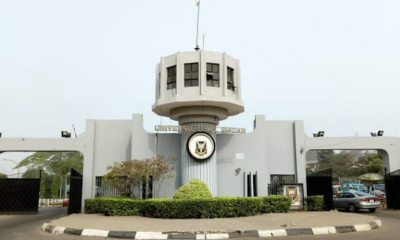

Uni-Ibadan to matriculate 3,749 students today


Education Commissioner monitors ongoing 2024 JAMB UTME in Oyo
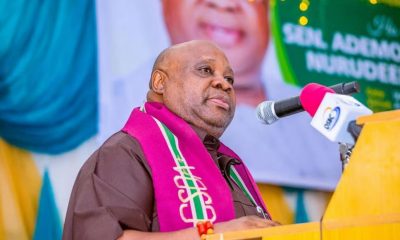

Adekele seeks synergy among tertiary institutions
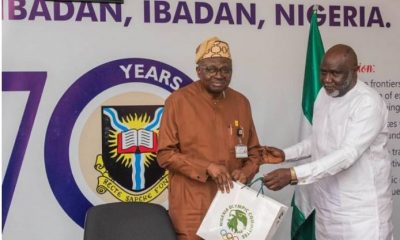

UI Vice-Chancellor objurgate state of sport facilities
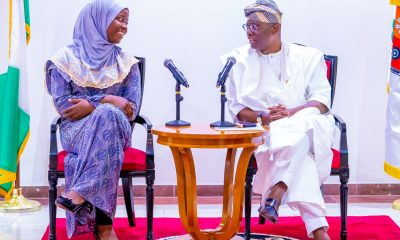

Sanwo-Olu disburses N10m awards to First Class LASU law student, Imoitesemeh, with 5.0 GPA
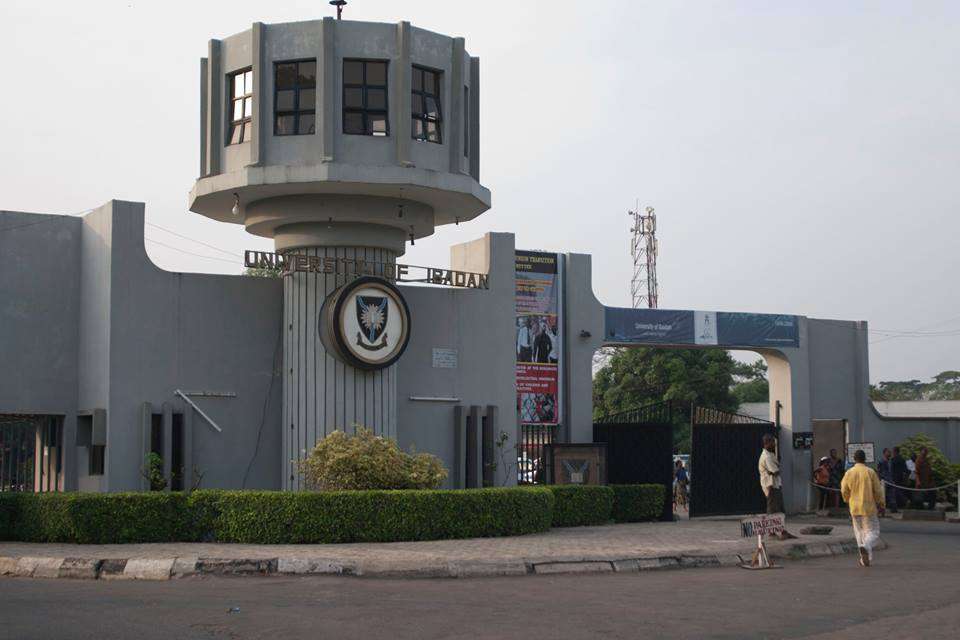

University of Ibadan announces resumption date
Trending
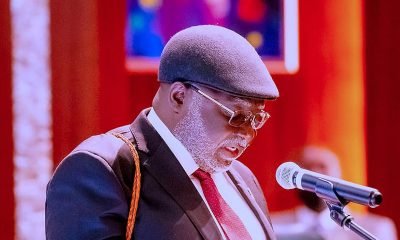
 Comments and Issues2 days ago
Comments and Issues2 days agoAs Ariwoola takes the judiciary to the top of the grease pole
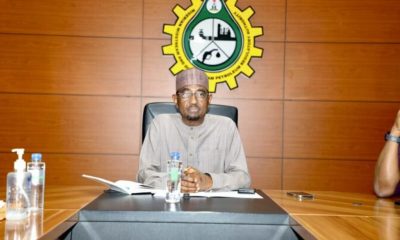
 Business6 days ago
Business6 days agoNMDPRA Chief faces backlash over comment on Dangote Refinery

 Business1 week ago
Business1 week agoGlobal cyber outage disrupts flights, Banks, telecoms, Media

 Business1 week ago
Business1 week agoKPMG criticizes FG’s 50% windfall tax, foresees legal disputes

 Business5 days ago
Business5 days agoZenith Bank retains position as Nigeria’s Tier-1 capital leader
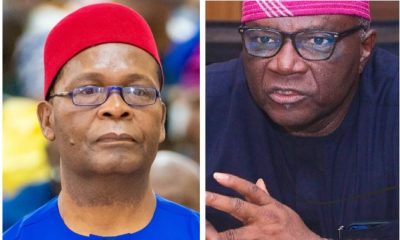
 Comments and Issues5 days ago
Comments and Issues5 days agoOnanuga and the Surprise from Joe Igbokwe

 Education7 days ago
Education7 days agoJAMB reacts to allege age limit by ministry of education

 News6 days ago
News6 days agoPhilip Shaibu officially joins APC, dumps PDP




